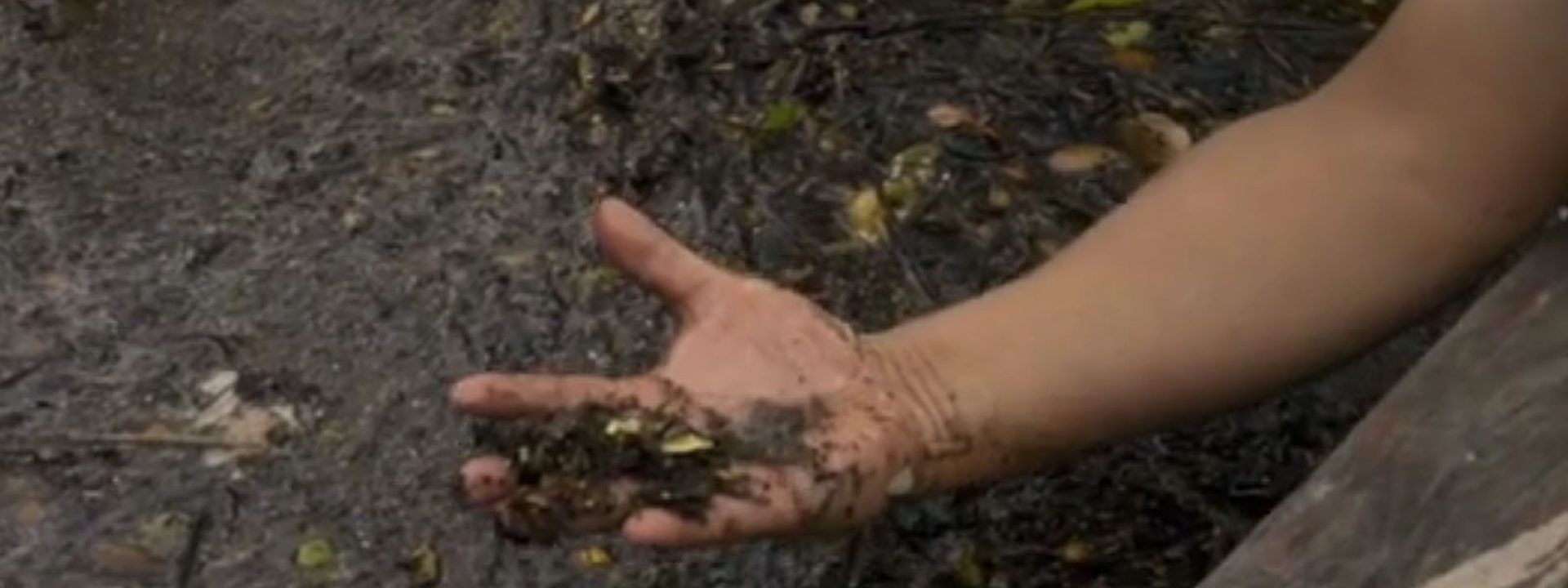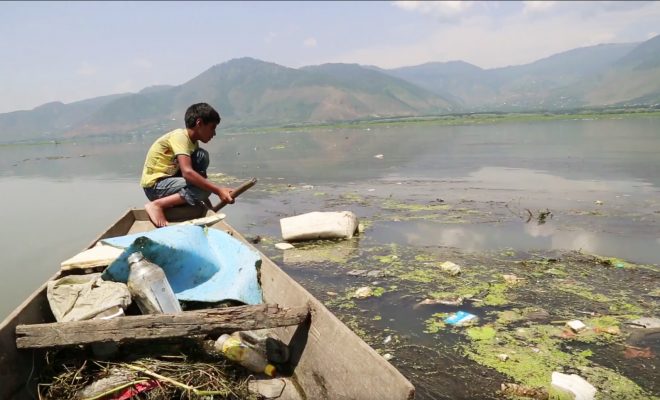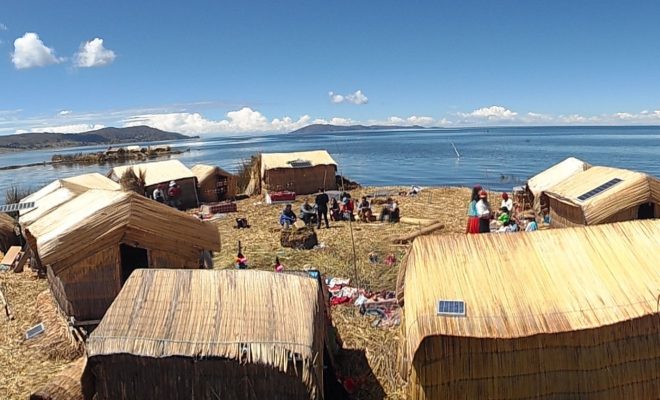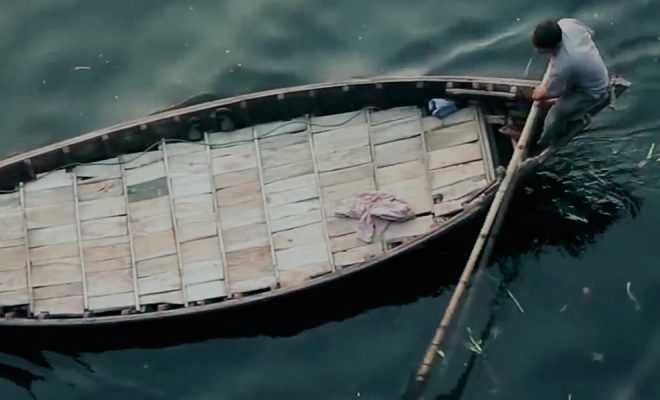Cuninico, where the rain forest turns black, by López (Spain), finalist of the We Art Water Film Festival 4
In June 2014 the North Peruvian oil pipeline suffered a breakage that resulted in the spill of the equivalent of more than 2,300 oil barrels in the northern jungle of Peru. The spill affected the Marañón River, one of the tributaries of the upper Amazon.
The Peruvian state-owned company operates this pipeline built in 1977 to transport oil from the fields in the Loreto department to the Pacific coast. Thus, the pipe crosses the Andes with a total length of 1,106 km and a transport capacity of 100,000 oil barrels per hour.
The native community of the Kukama-Kukamiria ethnic group, in the areas of Saramuro and Cuninico, in the Loreto region, in the Peruvian Amazonia, was severely hard-hit by the disaster. Water and fish were polluted and the population began to suffer diseases that mainly affected children: skin spots, allergies, vision and stomach problems.
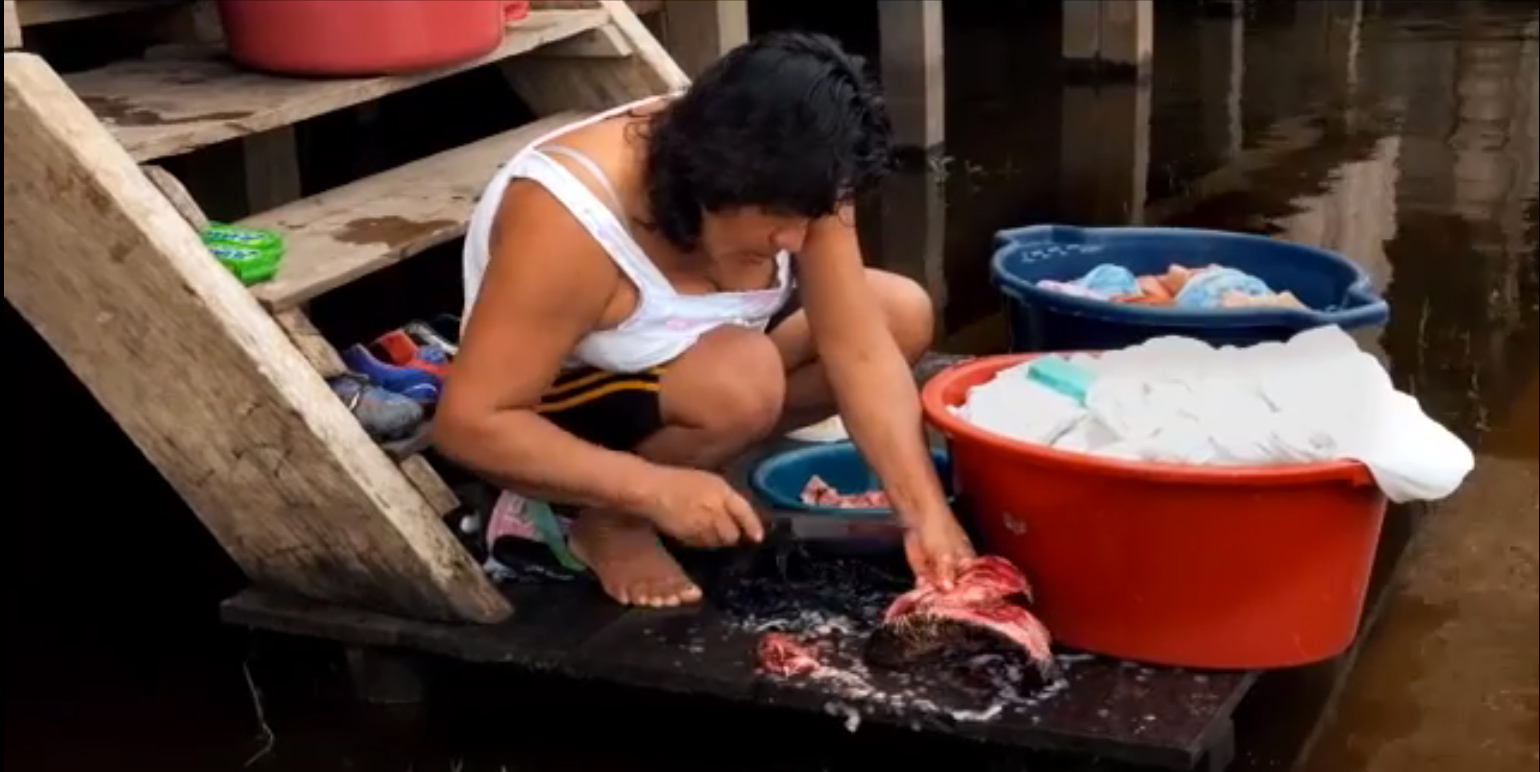
Their diet, based on fishing, was severely disrupted and cases of anemia and malnutrition started to appear. Paradoxically, fishermen were forced to buy fish in the city and many had to eat canned food. Their economy was also affected: they were not able to sell their fish and had to buy food as the land where they grew cassava, maize and peanuts was unusable.
The 720 inhabitants of Cuninico ended up depending on the collection of rainwater to drink, cook or wash themselves. Children stopped playing and swimming in the river whose banks turned black.
In the absence of immediate assistance from the State or the oil company, those affected filed a lawsuit in 2015. In May 2017, the Nauta Mixed Court ruled in favor of the communities, forcing the Peruvian Ministry of Health and the General Directorate of Epidemiology to implement a public health strategy and provide medical assistance to the affected, as well as epidemiological, environmental and health surveillance in the area.
The Peruvian authorities appealed. In its defense, the Ministry of Health declared that it did take care of the harmed and presented reports that accounted for the implemented health actions. However, the communities and parliamentary observers responded that those did not comply with the sentence.
After the spill, the levels of heavy metal contamination among the inhabitants in the area were confirmed by the tests carried out by the National Center for Occupational Health and Environmental Protection for Health (known in Spanish as Censopas) and by the Regional Health Directorate of Loreto.
Blood and urine tests performed on people in the communities of Cuninico and San Pedro showed that half of them had mercury and cadmium levels above the standards set by the World Health Organization (WHO).
In November 2017, a parliamentary investigation found Petroperú and the subcontractors in charge of ensuring the safety of the pipeline and the cleanup of the contaminated areas guilty, among others. In view of the helpless situation of the natives, the Inter-American Commission on Human Rights (IACHR) granted precautionary measures for those affected and urged the Peruvian State to provide them with adequate medical assistance, safe drinking water and adequate food.
Later, the Superior Court of the Loreto region confirmed a sentence in January 2018 that orders the Ministry of Health to design and develop a public health plan in Cuninico and an epidemiological surveillance system that includes the monitoring of the water quality, among other factors. The Ministry has not yet executed the ruling.
Petroperú undertook the task of cleaning the Marañón River, the land and vegetation. While this was happening, the native community of San Pedro, six hours away from Cuninico, crossing the Marañón River, suffered new oil spills, the most recent in February 2018.
The situation was not new. A report prepared by the parliamentary commission recorded 36 spills between 2008 and 2016, which affected around 141 hectares of communal land. The Peruvian Ministry of the Environment declared in 2016 that the spills had been caused by the corrosion in the infrastructure due to poor maintenance. Petroperú has also recently denounced acts of sabotage in the pipeline.
On May 15th, the plenary session of Parliament closed the case arguing that the investigative commission had not identified a “direct responsibility”, despite the fact that the last chapter of the document indicates that some executives were responsible through their acts or omissions.
Defenselessness in the face of deteriorating infrastructure
Today, in the absence of a forceful response from the State and Petroperú, the inhabitants of Cuninico continue depending on rainwater, because the 14 taps of water installed by the Peruvian Ministry of Housing last year only work for 40 minutes every day.
The situation described in the short film Cuninico, where the rain forest turns black continue to be unsolved. The legal maze faced by native communities which lasts over five years, increases their vulnerability and lack of protection. Three Sustainable Development Goals (3, 6 and 15) are committed to the Amazonia, where most of its inhabitants fight for their basic human rights: the maintenance and attention to their health and that life returns to their water.


